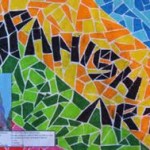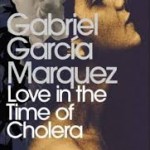Chilean author Isabel Allende, sometimes called “the world’s most widely read Spanish-language author”, has achieved great  commercial success with novels such as La Casa de los Espiritus (The House of the Spirits) and La Ciudad de las Bestias (City of the Beasts) among her many published works.
commercial success with novels such as La Casa de los Espiritus (The House of the Spirits) and La Ciudad de las Bestias (City of the Beasts) among her many published works.
Perhaps the key to Allende’s great success is her flowing style of prose which is often likened to a skilled storyteller telling a tale orally. Allende often uses complex and very long sentences; she frequently digresses and repeats herself, just as a person telling a story tends to do, all of which adds to the appeal of her writing. At other times she creates impact by doing just the opposite and writing in the economical language of her journalistic past when she wants the action speaks for itself, a style she employs in some of her more brutal scenes to, in her own words, “grab the reader by the neck”.
Allende describes her writing as an organic process, one which she says she would be unable to do in any language other than her native Spanish, although she also speaks English well, having lived for many years in California. For such an acclaimed author, Allende remains very modest, and admits that her years in America have had a detrimental effect on her Spanish, to the point that she now needs a Spanish editor to correct mistakes and remove the American influences from her manuscripts.
Allende is a formidable writer who produces novels rich in emotion, vivid characters and strong plots. Her works are widely translated so if you need a few more Spanish lessons before you’re ready to tackle them in their original language, do make a point of discovering her in English.
 Pablo Neruda who is hailed as one of the most important poets of the 20th century. Born Neftali Ricardo Reyes Basoalto in 1904, Neruda was something of a prodigy, having composed his first poems at the age of ten and been published by the time he reached his early teens.
Pablo Neruda who is hailed as one of the most important poets of the 20th century. Born Neftali Ricardo Reyes Basoalto in 1904, Neruda was something of a prodigy, having composed his first poems at the age of ten and been published by the time he reached his early teens. greatest works of literature ever written in any language. Its full title in Spanish is El ingenioso hidalgo don Quijote de la Mancha, or The Ingenious Gentleman Don Quixote de la Mancha. The novel by Cervantes follows the adventures of Alonso Quijano, who reinvents himself as Don Quixote and embarks on a quest to revive chivalry, accompanied by his squire, Sancho Panza.
greatest works of literature ever written in any language. Its full title in Spanish is El ingenioso hidalgo don Quijote de la Mancha, or The Ingenious Gentleman Don Quixote de la Mancha. The novel by Cervantes follows the adventures of Alonso Quijano, who reinvents himself as Don Quixote and embarks on a quest to revive chivalry, accompanied by his squire, Sancho Panza.
 week we turn our attention to a medium whose claim to being cultural is somewhat dubious, but nevertheless it is a fixture on television screens across the Spanish-speaking world and beyond, and it could help you to engage with the language in new ways: the Latin American soap opera.
week we turn our attention to a medium whose claim to being cultural is somewhat dubious, but nevertheless it is a fixture on television screens across the Spanish-speaking world and beyond, and it could help you to engage with the language in new ways: the Latin American soap opera. learning; they’re more likely to persevere with their studies and they enjoy better results. To that end, we’re going to take a look at one of the great pillars of Spanish culture, art.
learning; they’re more likely to persevere with their studies and they enjoy better results. To that end, we’re going to take a look at one of the great pillars of Spanish culture, art.
 the feast of the Immaculate Conception, with a special ritual known as los Seises (the dance of six) in front of Seville’s Gothic cathedral in which not six but ten elaborately-dressed boys perform a dance with intricate movements and gestures which is very moving to watch.
the feast of the Immaculate Conception, with a special ritual known as los Seises (the dance of six) in front of Seville’s Gothic cathedral in which not six but ten elaborately-dressed boys perform a dance with intricate movements and gestures which is very moving to watch. language to have contributed to the development of modern-day Spanish. It’s also significantly influenced by Arabic, thanks to the long-term Muslim presence in the Iberian Peninsula between the years 711 and 1492 AD. Loan words from Arabic began to appear in Spanish in the 8th and 9th centuries as the number of speakers of the language increased, but the influence of Arabic peaked during the Reconquista, when large territories where large numbers of people spoke Arabic or Arabic-influenced local dialects were recaptured from their Moorish rulers. This was a period in which many Arabic words and their derivatives were absorbed into the Castilian language. One result of this is that Spanish often has both Arabic and Latin derived words with the same meaning, such as escorpión and alacrán, meaning scorpion. The Arabic versions are often favoured in areas which fell under Moorish rule for longer periods.
language to have contributed to the development of modern-day Spanish. It’s also significantly influenced by Arabic, thanks to the long-term Muslim presence in the Iberian Peninsula between the years 711 and 1492 AD. Loan words from Arabic began to appear in Spanish in the 8th and 9th centuries as the number of speakers of the language increased, but the influence of Arabic peaked during the Reconquista, when large territories where large numbers of people spoke Arabic or Arabic-influenced local dialects were recaptured from their Moorish rulers. This was a period in which many Arabic words and their derivatives were absorbed into the Castilian language. One result of this is that Spanish often has both Arabic and Latin derived words with the same meaning, such as escorpión and alacrán, meaning scorpion. The Arabic versions are often favoured in areas which fell under Moorish rule for longer periods. Cervantes’ immortal Don Quixote de la Mancha, published in 1605 and considered to be the world’s first modern novel; the poetry and prose of Federico García Lorca, who was catapulted to fame posthumously after his murder at the start of the Spanish Civil war; through to modern classics like Love in the Time of Cholera by Nobel Prize-winning Columbian author Gabriel García Márquez, and the highly popular works of Carlos Ruiz Zafón. Spanish literature is truly magical.
Cervantes’ immortal Don Quixote de la Mancha, published in 1605 and considered to be the world’s first modern novel; the poetry and prose of Federico García Lorca, who was catapulted to fame posthumously after his murder at the start of the Spanish Civil war; through to modern classics like Love in the Time of Cholera by Nobel Prize-winning Columbian author Gabriel García Márquez, and the highly popular works of Carlos Ruiz Zafón. Spanish literature is truly magical.